What is Customer Onboarding? Here's How to Get It Right
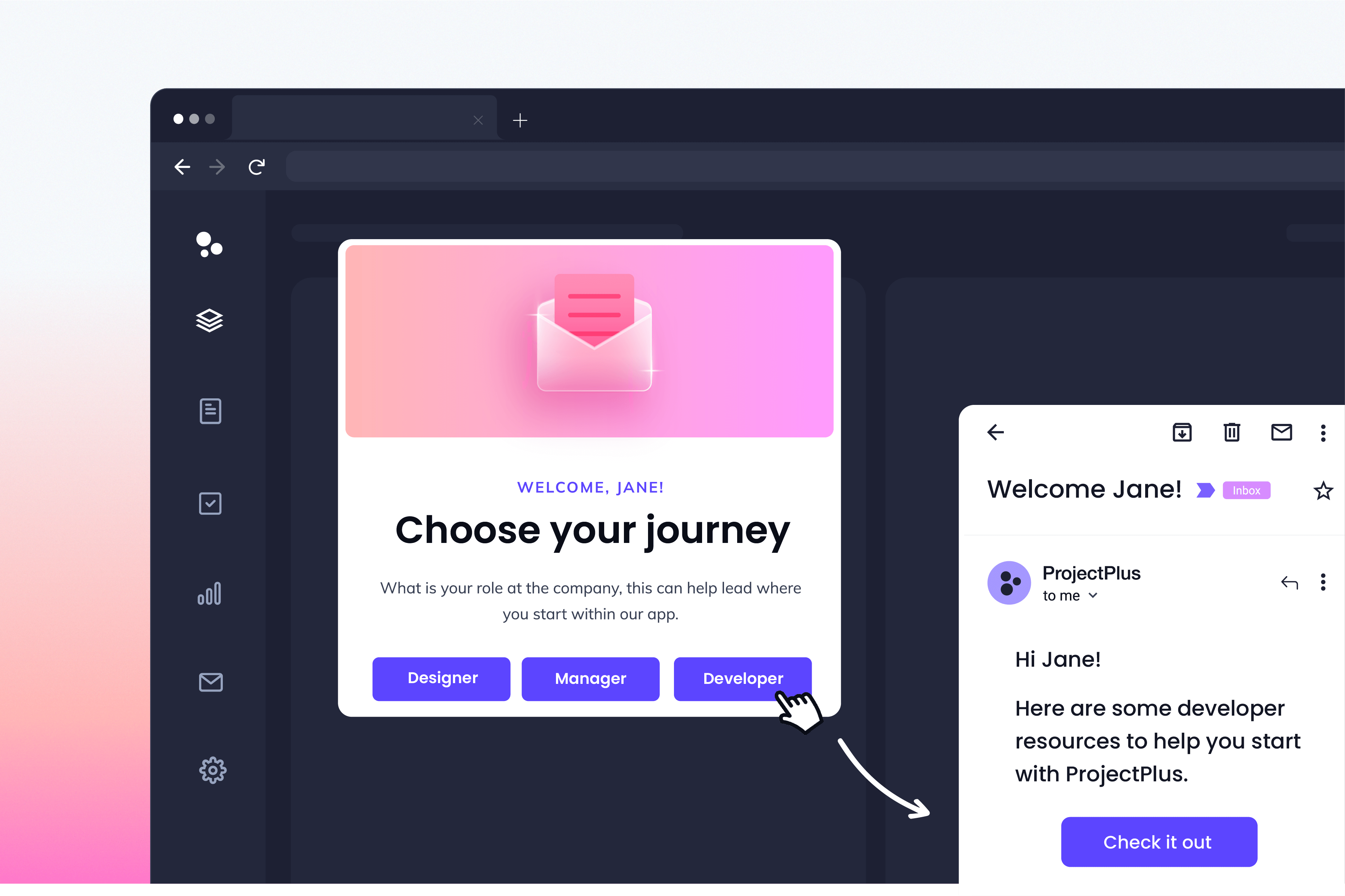
.png)

.png)
Congratulations! You’ve got a new customer 🎉
It can take forever for someone to move through your marketing and sales funnels. Whether they’ve been following your brand’s newsletter for years or your sales team worked their cold call magic, landing a new customer takes the coordinated effort of multiple departments.
This is where so many SaaS companies stop. New customers typically get excited about your product…but they don’t know where to go and how to use it. Enter: Buyer’s remorse.
It’s why retention continues to be a big problem for so many businesses: The average retention rate is 75%...which means you lose a quarter of your customers and call it a success. It’s much easier and more cost-effective to keep your existing customers than find new ones. That’s why customer onboarding is so important. In this post, we’ll talk about what customer onboarding is, why it matters, and how to do it effectively for your business.
Customer onboarding is the process of guiding a new customer through your product so they can learn how to gain the most value from it. An effective customer onboarding process teaches them how to use your product, but also how to build it into their everyday workflow so that they get the most out of their purchase.
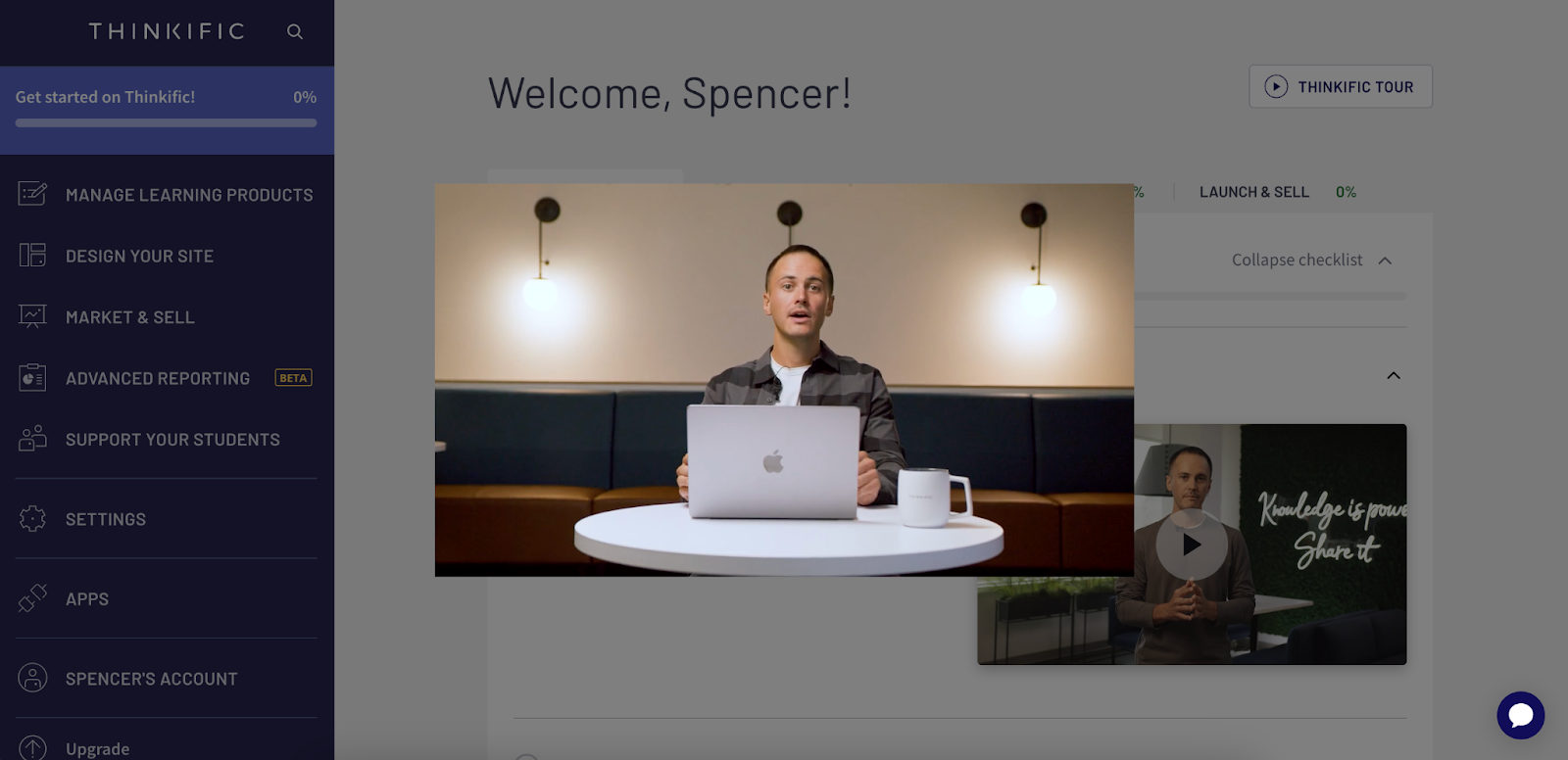
Onboarding looks different for every product, but this example from Thinkific shows the kind of curated customer journey that highlights the most important areas of the product to get started. Customers can get a quick tour and see exactly where they need to go next to learn each section of the product.
How is this different from user onboarding? Often, you hear people use the terms “customer” and “user” interchangeably. Much of the best practices we’ll talk about below can work for both, but the goals and tone of the two are different. User onboarding focuses on helping individuals realize value and succeed with your product. This applies to anyone logging in to your app—whether they’re on a freemium plan or an enterprise one—as you hope to get them from user to customer.
“The situations of the user and customer are entirely different. Their motivations are different. Their abilities are different. When you look at it, they're on the opposite ends of the scale. Users don't have the time and patience to consume everything about your product. They'll cozy up with the first tool that shows them progress, outcome, and value with ease. But customers need more.” - Ty Magnin, User vs. Customer Onboarding
Customer onboarding focuses more on long-term success and relationship-building. You want to guide them through all of the right features, sure, but also to meet their organizational goals using your product. Your goal with customer onboarding should be to strengthen your relationship with the individual and the organization. That way, customers love your product so much they can’t stop talking about it—or that they uplevel their engagement with you by purchasing a higher plan, more seats, or other add-ons.
Customer onboarding may seem like a “nice to have” when you’re focused on shipping out new features. But it’s not a step you can skip (unless you want to pay big $$ to constantly find new customers.)
That’s because customer onboarding has a direct impact on your customer retention—how long a customer stays a customer. Effective app onboarding can increase retention rates by up to 50%. And just a 5% increase in customer retention can boost your profitability by up to 75%. A good onboarding program creates momentum, reducing customer churn.
What’s more, a solid customer onboarding program starts your relationship with a customer off right. You only have one chance at a good first impression, and making it easy for your new customers to understand your product and how they can use it effectively sets you up for a ongoing relationship.
The onboarding phase of the customer journey is one of the most critical for your product’s survival. Keeping customers engaged over time means more revenue and more expansion opportunities in the future.
When we say “onboarding” we’re not just talking about in-app onboarding. Onboarding requires the coordination of multiple teams: Product, marketing, sales, and customer success. Multi-channel campaigns involving email and in-app messaging achieve a 25% higher conversion rate than single-channel campaigns. That’s why you should approach your onboarding efforts with a clear strategy: We will implement X, Y, and Z to impact customer retention and customer loyalty.
That means you’ll need to set clear goals and split up ownership over different areas, like:
If you have a customer success team, they should own retention and overall onboarding success. But you can’t just blanket the same messages everywhere for your customers. A personalized approach is what takes your onboarding from an obligation to something that makes people excited to be a part of something bigger. What’s more, 71% of customers expect personalized interactions, and 76% get frustrated when that’s not the case.
Which customer onboarding metrics should you set goals around?
“Fixing your onboarding flow without metrics is like repairing a leaky pipe with the lights off. Progress will be slow, and you’re likely to do more damage than good…not to mention the mess. Start tracking key metrics during onboarding so you can understand your users and give them an amazing first impression of what your product has to offer.” - Eric Keating, 8 User Onboarding Metrics and KPIs
The key performance indicators (KPIs) for customer onboarding are:
As you experiment with different areas of your onboarding flow, track each of these metrics carefully. What’s tricky about retention optimization is that these metrics tend to be lagging indicators—meaning, you won’t be able to move them without making a change, and that change can take 30 or 60 days to really see the effects.
The leading indicator you can optimize for? Customer engagement. Think detailed metrics like number of logins, time in app, or number of actions performed (likes, comments, key tasks, etc) that show your customers are actually using your product or service, instead of letting it languish.
Customer onboarding isn’t just a one-time demo or a product tour. Done right, your customer onboarding should be a multi-channel process that combines touchpoints from account management, customer support, and marketing efforts. Your goal? Get that aha moment asap:
“The longer your time to value, the more customer turnover you'll see. People have limited patience and if they don't reach that aha moment quickly, they're likely to feel that their time is being wasted. If they've already paid for your product, that's time and money spent on little visible return. But a switch flips once customers realize the value of your service. Reaching that aha moment or activation event is often what separates users who stick with your product from those who end up churning.” - Katryna Balboni, Time to Value
Here’s what that looks like:
Onboarding starts right when a customer signs up for your product. This is the first test for your product—and one that is often a huge drop-off point because a lengthy signup process can feel too overwhelming. Your sign up process should be as easy as possible.
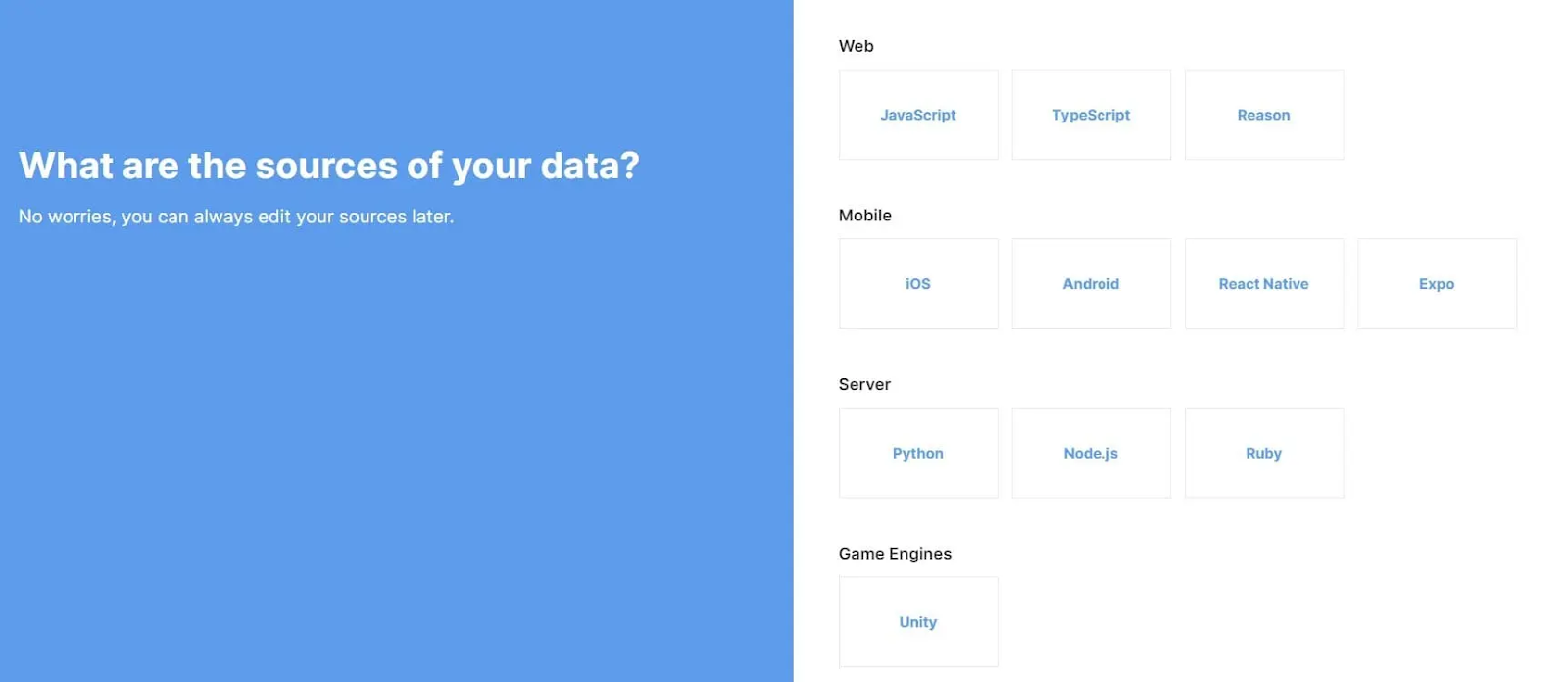
Avo, an analytics company, excels at this. Their sign up pages are clean, each with a single question. This simplicity takes what could be a complicated, overwhelming process—data migration and analytics—into an easy set-up that allows the customer to get started right away.
This friendly and simple branding also includes messaging that customers can change or skip their answers if they’re not sure yet, which removes any pressure and gets them in the app right away. This is exactly the kind of approachable customer experience you should aim for.
Roll out the welcome mat for your new customers in more ways than one. Drop a note for your new customers in their inbox thanking them for their purchase and giving them a few ways to get started. Keep this first email short and sweet—the goal is to get them to log in as quickly as possible—and consider this the first in a series of welcome emails designed to educate them about the value your product offers.

Visual workspace app Miro does a great job with this. Their welcome email for new customers contains friendly, low-pressure copy, with options for customers to explore several different elements of the product (or schedule some time with an expert to get a more hands-on onboarding experience.) Plus, closing the email with a little bit of social proof helps customers feel good about their decision
The first time you log in to a new app can be information overload. What’s this button? Where do I go for my profile? Why do I already have 10 notifications? Your customers likely have a lot of questions, and you can’t treat someone logging in for the first time like a regular user. But you also can’t throw everything at them all at once. Streamline the badges and buttons and give them a guided experience so their first interaction in their customer journey feels seamless, so they feel like they already know how to use it.
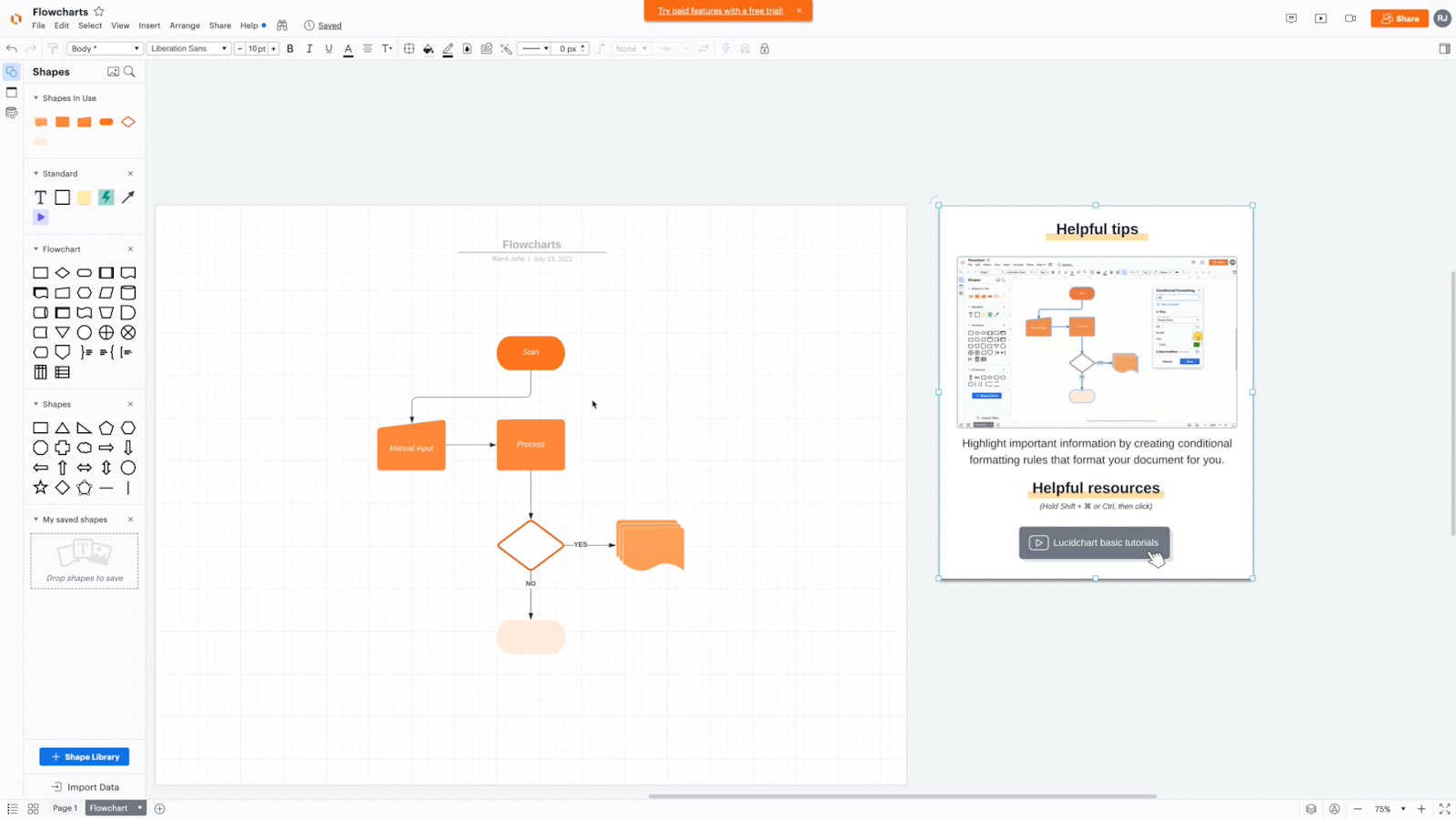
Workflow app Lucidchart does a great job of balancing their guidance with letting the user explore for themselves by offering “helpful tips” that hang out on the side of the user experience as someone moves through their onboarding flow. If a customer wants to go deeper on a given feature, they can access more information that way. If they want to play around, they can do that, too.
The best apps integrate fully into a customer’s existing tech stack. That’s part of what makes a product valuable in the first place, so it’s one of the very first steps you should prompt your user to do. The last thing you want to do is make your customer file an engineering ticket just so they can hookup their data or accounts from one platform into another.
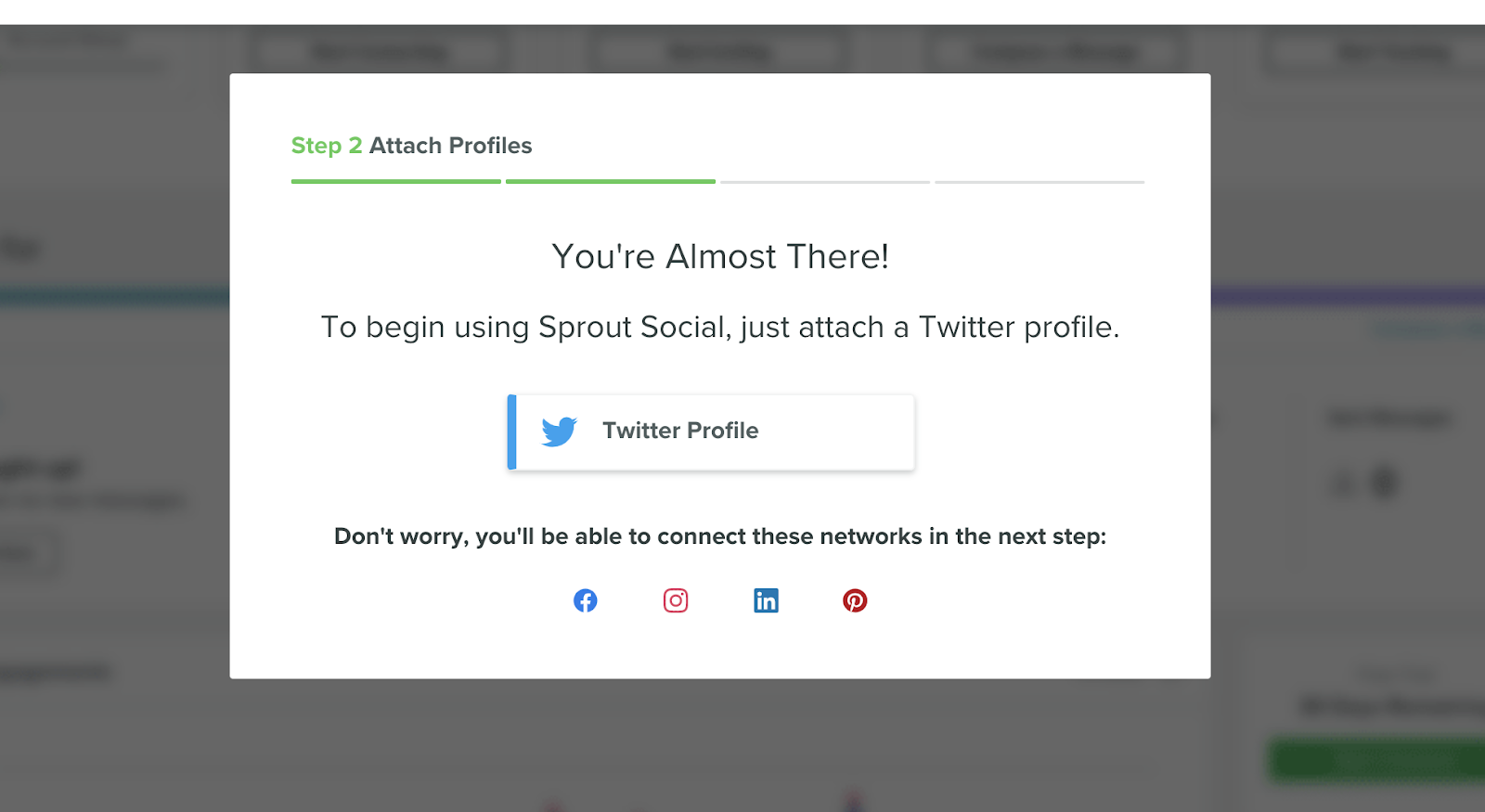
A platform like SproutSocial does this directly in their guided onboarding flow. SproutSocial helps manage multiple social media platforms in one place, so without connecting your social media accounts, it’s not very useful. They use a helpful modal right up front that makes it seamless.
Adding a product tour gives your new customers a chance to explore your product more in-depth so they can understand exactly what features are relevant to completing their goals. Take a sequential, guided approach to showcasing exactly how your product works and what key tasks they should complete. Taking this approach is what can give customers that “aha moment” when customers realize exactly how much your product is going to help them.
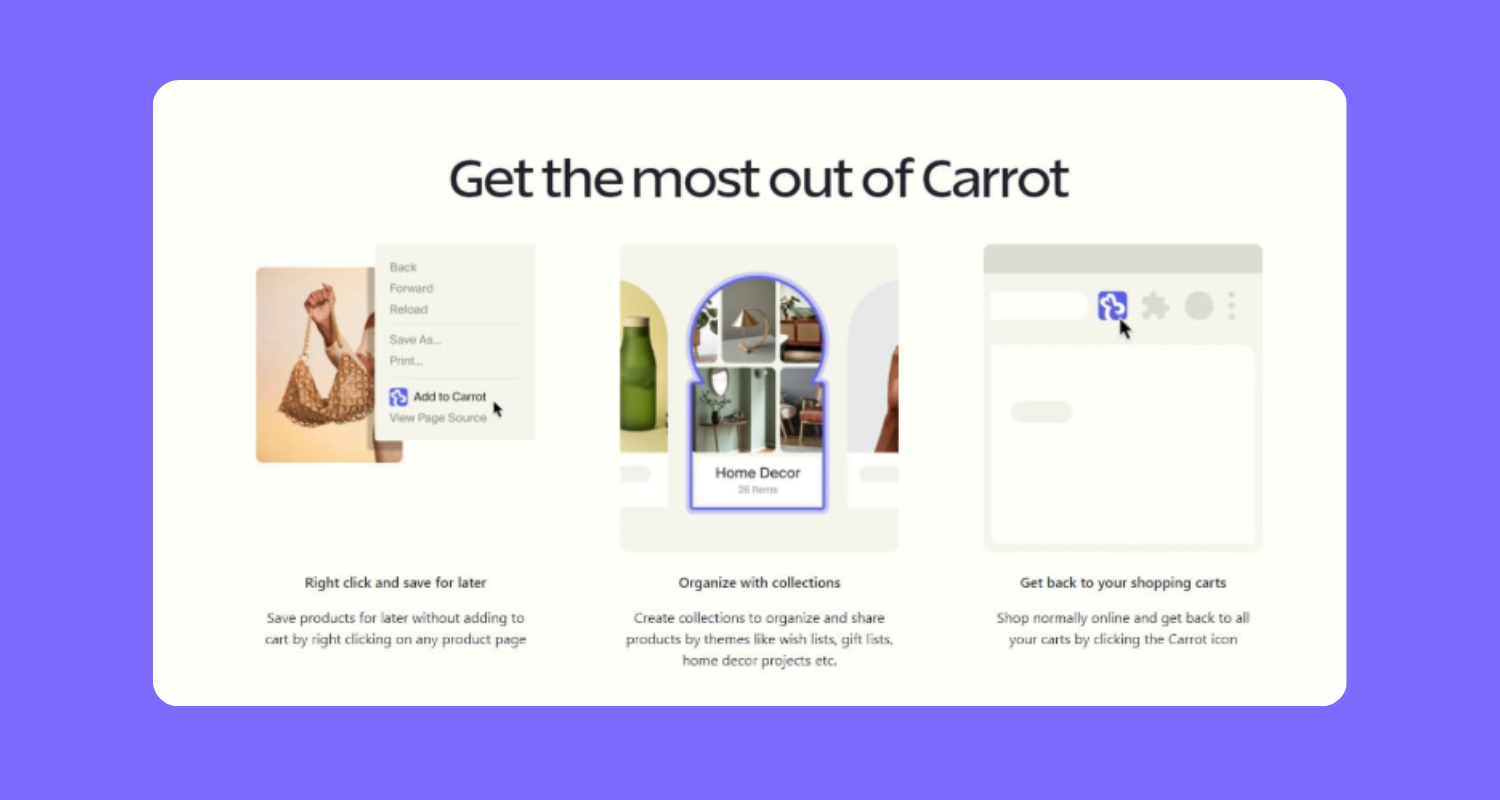
Shopping app Carrot starts with a little bit of showmanship by connecting you to all of the carts you have open around the Internet. They continue their guided tour by demonstrating exactly how to use the app, then wrapping up with a quick slide on additional how-to. This sleek demonstration takes all of a minute to complete and immediately gets customers ready to roll
Your welcome email is just the beginning. Make sure you keep the conversation going with multiple follow-up emails encouraging customers to try other features or showcasing case studies and use cases to inspire them to dig deeper. This can be specific to onboarding, but it can also include emails with additional templates, helpful hints, or links to other ways to engage with you, like with your community
This email from Google showcases a customer milestone using a behavioral trigger, which can keep momentum going for new customers as they hit their first big numbers. While this email is for a more established user, the idea remains the same: How can you show your customers the value of your product, so they continue to work with you?

This email from Google showcases a customer milestone using a behavioral trigger, which can keep momentum going for new customers as they hit their first big numbers. While this email is for a more established user, the idea remains the same: How can you show your customers the value of your product, so they continue to work with you?
Each of these steps we discussed are all important to include, but what matters the most is a consistent approach across multiple channels for new customers. Put yourself in the shoes of your new customer—they’re not going to consume hours of content at once. They may do the product tour and then not log in for another week. Use a combination of email, push notifications, an in-app reminders to help nudge them along the customer journey..By using multiple channels at once, you can help customers build a habit of using your product regularly—getting much more value out of each time they log in. That’s what sets them up for success as a long-term customer.
By using multiple channels at once, you can help customers build a habit of using your product regularly—getting much more value out of each time they log in. That’s what sets them up for success as a long-term customer
At Appcues, we help customer success managers, product managers, and marketers make better onboarding experiences every day. We’ve seen our fair share of onboarding flows—the good, the bad, and the ugly. When folks complain that their onboarding “isn’t working,” here’s usually what’s happening…
The biggest problem we see? When onboarding tries to cover every single detail about the product. Your new customer might not know exactly what your product does, but you don’t have to show them a random feature four clicks down in their first login. Imagine if you showed up to your first class in medical school and they sent you down to perform heart surgery! You wouldn’t be ready, and your new customers aren’t either.
The answer: Pace your content in digestible, easy-to-understand lessons. Let them build their experience naturally. It takes time to become a power user.
Part of the reason so many onboarding experiences overwhelm their customers is because the product team gets so excited about what they’ve built that they forget why they built it.
Yes, that new feature you spent ages tinkering with and shipping is awesome. But it may not be relevant right this second to your customer, who just wants to see and understand their main dashboard. Align your customer onboarding with your customer journey to build confidence and increase product adoption.
Product teams obsess over their metrics, but they miss out on the qualitative feedback that helps build a culture of continuous improvement. You shouldn’t ask for feedback on day one, but include a check-in with any new customers about how they’re doing and what other information they need so you can tweak your onboarding flow accordingly.
With Appcues, you can create a complete multi-channel experience without commandeering the engineering team. We help you connect in-app, email, and push notifications so you can create user journeys that kick off your customer relationships the right way. See how we can help you.